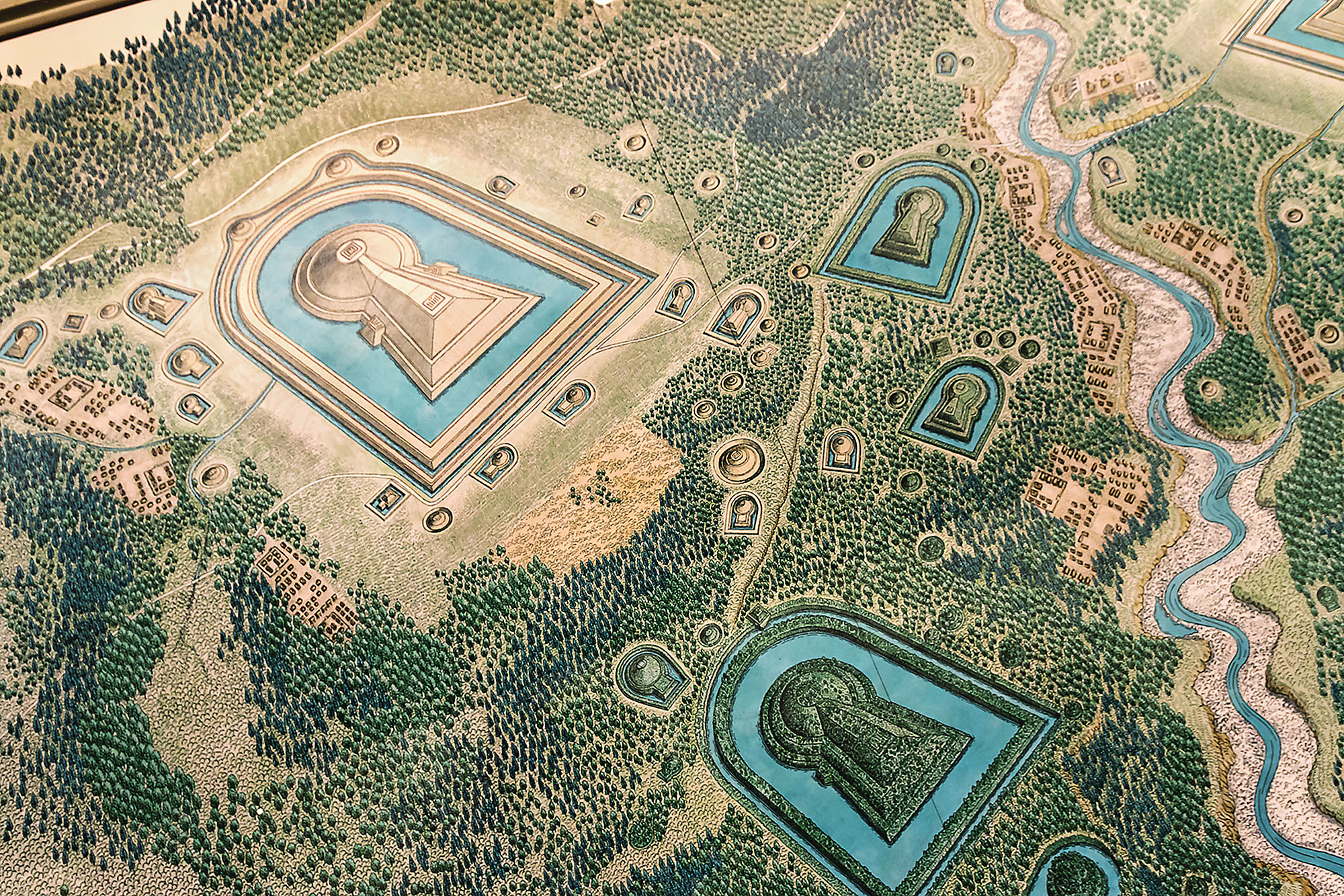As I peered out the window from my vantage point on the 21st floor of the Sakai City Hall, in the distance I could see Abeno Harukas — Japan's tallest skyscraper, which houses a train station, hotel, museum, department store and offices. But this modern curiosity was not what I was looking for. I was searching for something much older, more subtle but no less marvelous.
I walked to the other side of the room and looked out again. It was hard to see its famous keyhole shape, but there it was: a large wooded hill rising abruptly among the city dwellings. I was gazing at the fifth-century Nintoku-tenno-ryo Kofun, Japan's largest kofun (burial mound) and one of the grandest mausoleums in the world.
In order to appreciate the kofun in all its splendor, though, you have to exercise the imagination. First, erase the urban sprawl and go back in time a millennium and a half. Then, denude the tumulus of trees and vegetation and picture a three-tiered earthen mound covered in stones and lined with haniwa clay figurines. Finally, imagine numerous kofun of different shapes and sizes dotting the landscape.


















With your current subscription plan you can comment on stories. However, before writing your first comment, please create a display name in the Profile section of your subscriber account page.